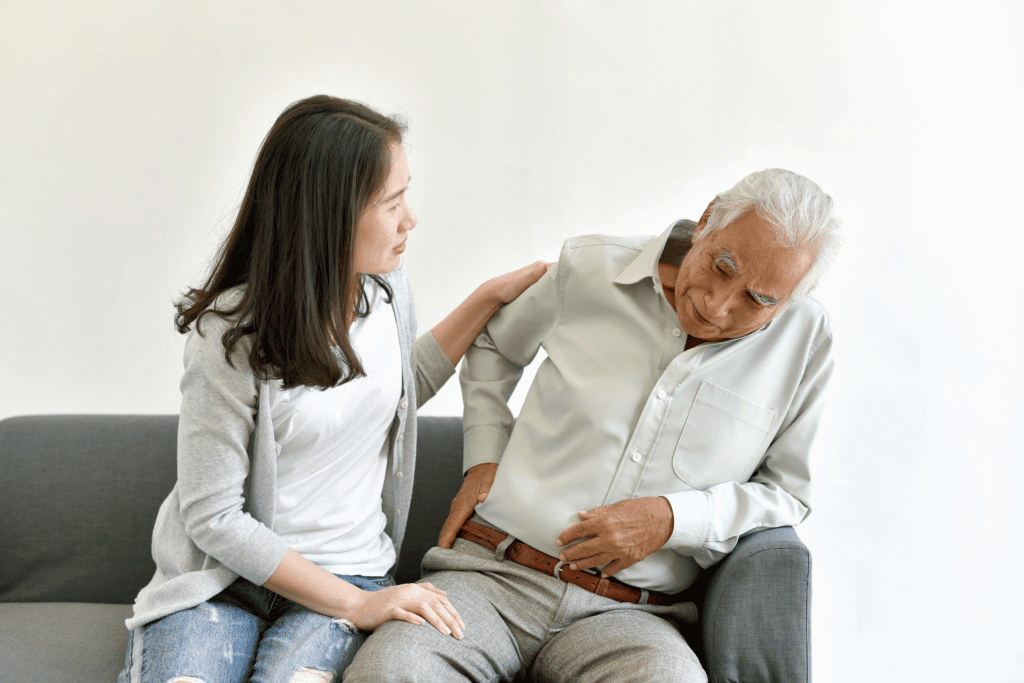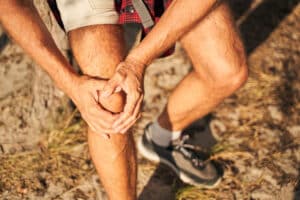If you’ve ever experienced hip pain, you know that it can be agitating and limit your daily activities. One of the more common varieties of hip pain is hip bursitis (or trochanteric bursitis).
In this article, we’ll explain what hip bursitis is and explore some options for which exercises for hip bursitis will make you feel better– and also movements to avoid when hip bursitis starts to affect how you move.
Finally, we’ll provide several strengthening and stretching exercises to help you manage your hip bursitis so you can feel better in all your daily activities.
What Is Hip Bursitis?
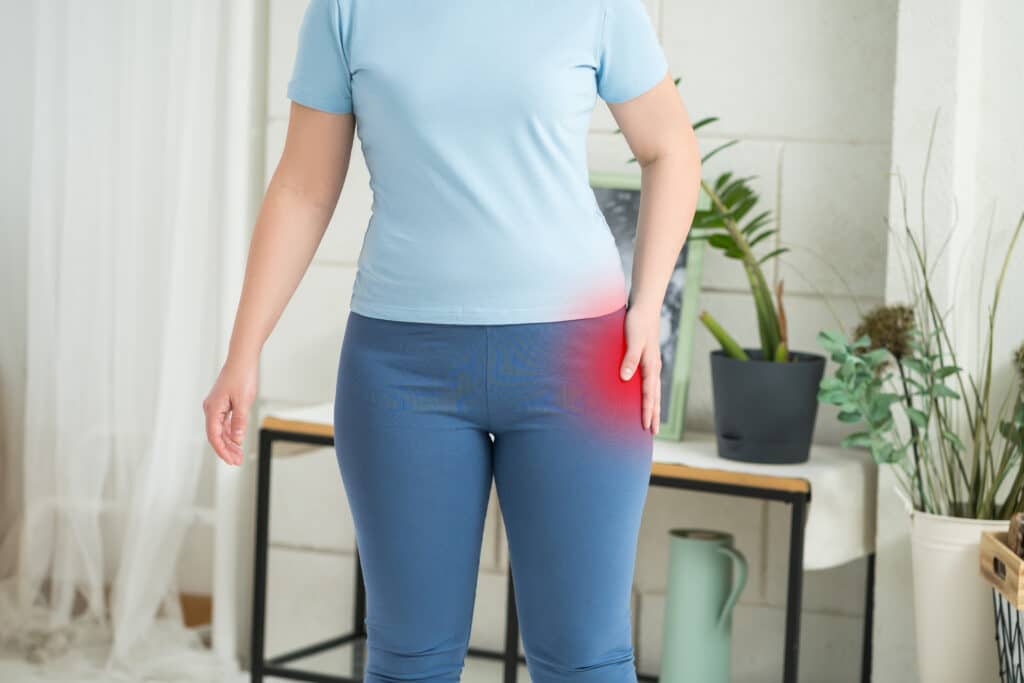
Hip bursitis refers to the inflammation of the bursa in your hip joint.
Hip bursitis is a condition caused by the inflammation of a small fluid-filled sac called a bursa that helps to cushion your joints. Bursae can be found in your knees, elbows, hips, and heels.
Sometimes, with too much repetitive motion, trauma, or stress to the joint, these sacs can become inflamed, which can cause pain with movement.
What Are the Symptoms of Hip Bursitis?
There are two main symptoms of hip bursitis:
- Pain in your outer hip when lying directly on your side
- Pain when getting up from a chair after sitting for a long time.
Hip bursitis pain also worsens after prolonged activity, such as standing or walking.
Hip bursitis pain is usually localized to only one side of the body and starts as a sharp, acute pain. Over time, it can evolve into a dull, achy pain.
The area around the affected hip may be warm and swollen due to the inflamed bursa under the skin. The spot where the pain is located on your hip will also be tender to deep touch or pressure. It can also be painful when getting in and out of a car or climbing stairs.
There are other causes of lateral hip pain, so it is important to see a doctor if it worsens, interferes with your daily activities, or spreads to your leg or back.
A healthcare professional, like a physical therapist, can help you identify the source of your painful hip bursitis so that you can get back to doing the things you love pain-free.
What Are the Causes of Hip Bursitis?

Hip bursitis is often the result of excessive stress on the joint. Some sports and occupations can put you at greater risk due to repetitive motion or a limited variety of range of motion required for that activity.
These may include sports that involve a lot of running or cycling, jobs that require stair climbing or prolonged walking, and other activities that require continuous, repetitive motion of the hip joints.
Other conditions can also increase the risk of developing trochanteric bursitis. Trauma or direct injury to the hip joint, ground-level falls, scoliosis, and having one leg that is significantly stronger than the other can all be risk factors for developing bursitis.
Sometimes, hip bursitis can develop without a definitive cause, but a medical professional can typically identify the cause.
Middle-aged and elderly people tend to be more affected by bursitis than others. It is also more common in women than men.
What Are the Best Exercises for Hip Bursitis?
The recommended initial treatment for hip bursitis is activity limitations and anti-inflammatory medications. Once the inflammation is controlled, you can begin targeted strengthening exercises and stretches to target the hip and leg muscles.
Keep in mind that these exercises should not cause significant discomfort or pain. If you are having severe pain during or after performing the exercises, you should stop. Seek advice from a medical professional or physical therapist before continuing.
Research has proven that a few specific exercises for hip bursitis are effective for reducing pain and improving function. You can repeat these exercises for around three sets of ten repetitions, with short rests between sets and exercises.
Side-lying Leg Lifts
- Lie on your unaffected side with your legs out straight.
- Lift the top leg a couple of inches off the bottom, then slowly lower back down.
- Keep the motion slow and controlled, and stop if you encounter any pain.
Clamshells
- Lie on your unaffected side with your knees slightly bent toward your chest.
- Keeping your feet together, lift one knee like a clam’s shell opening.
- Hold that position at the top for a few seconds, then release.
Seated Kicks
- Sitting up with good posture in a supportive chair, kick one leg out straight.
- Hold that position for a few seconds, then lower both feet onto the floor.
These are also sometimes referred to as seated straight-leg raises. Perform ten full repetitions on one side before switching sides.
Stretches for Hip Bursitis
There are also stretches for hip bursitis that can help to improve the flexibility of the tissues around your hip and thigh.
Figure Four Stretch
- To begin this hip rotator stretch, lie on your back with your affected leg crossed over the other knee.
- Pull your legs toward your chest to increase the intensity of the stretch.
- Hold a gentle stretch for thirty seconds.
IT Band Stretch
- Stand with your left side closest to the wall and your left hand against the wall with a mostly straight arm.
- Cross your left leg over your right leg so your shins are crossed.
- Reach your right arm up and overhead, and bend your side as if you are trying to put your right fingertips on the wall. Hold for 30 seconds.
- You should feel a stretch in your outer right hip.
Don’t overdo it with this stretch- as it can exacerbate your symptoms if you push too much.
You should see a physical therapist for hip bursitis, especially if it impacts your daily life. An expert can advise you on choosing effective exercises, proper form, exercise progression, and pain management.
Seeing a physical therapist soon after developing hip bursitis symptoms can be very helpful in limiting the impact on your daily activities.
Which Hip Bursitis Exercises Should I Avoid?
While the exercises for hip bursitis in the previous section can help, it’s a good idea to certain other activities. The following exercises can cause too much repetitive movement at the hip joint and worsen the irritation of the bursa and, in turn, your pain.
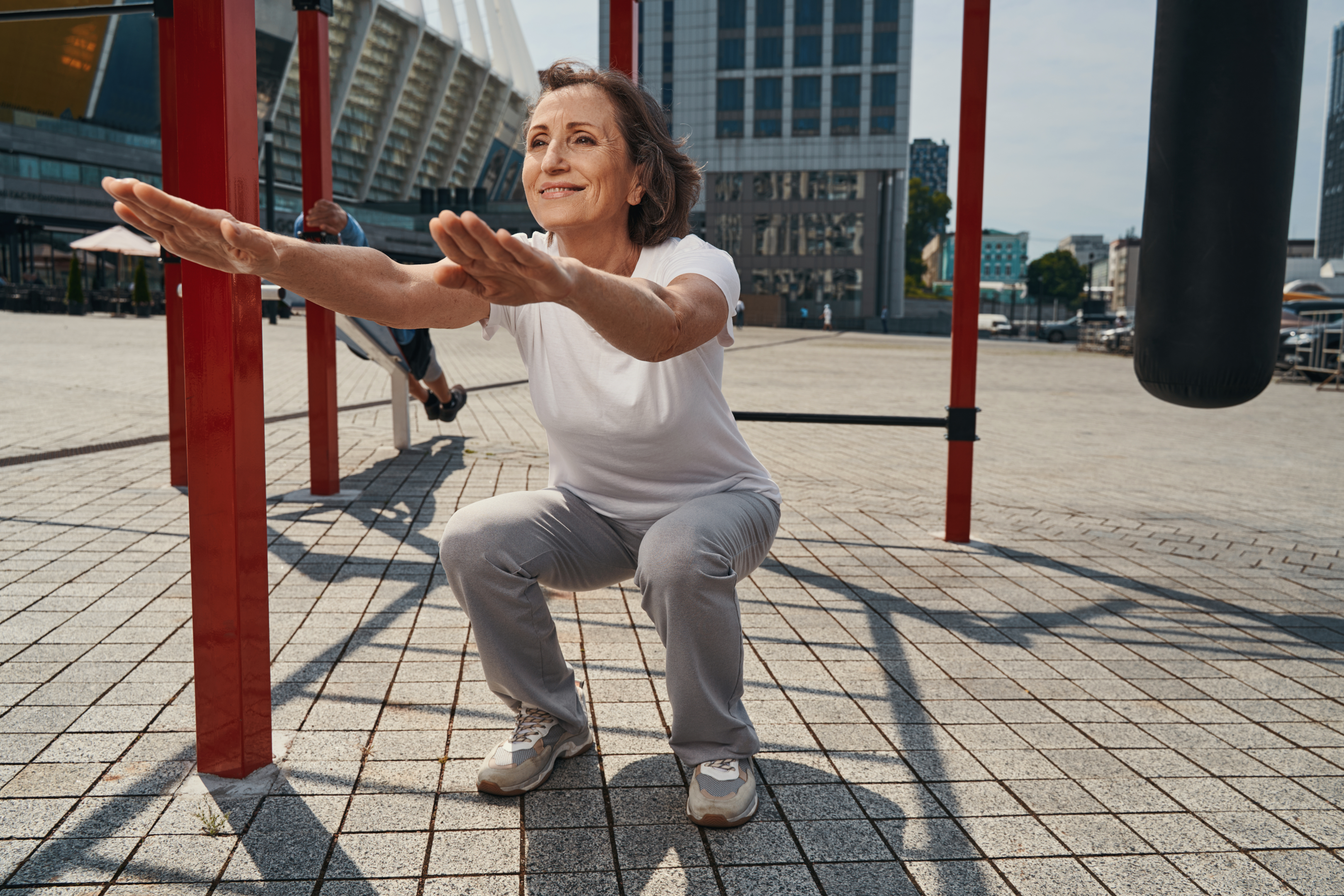
Squats
Lowering in and out of squatting positions can put a lot of stress on your hip joints. When inflamed, this position may be too much for you and cause more pain unnecessarily.
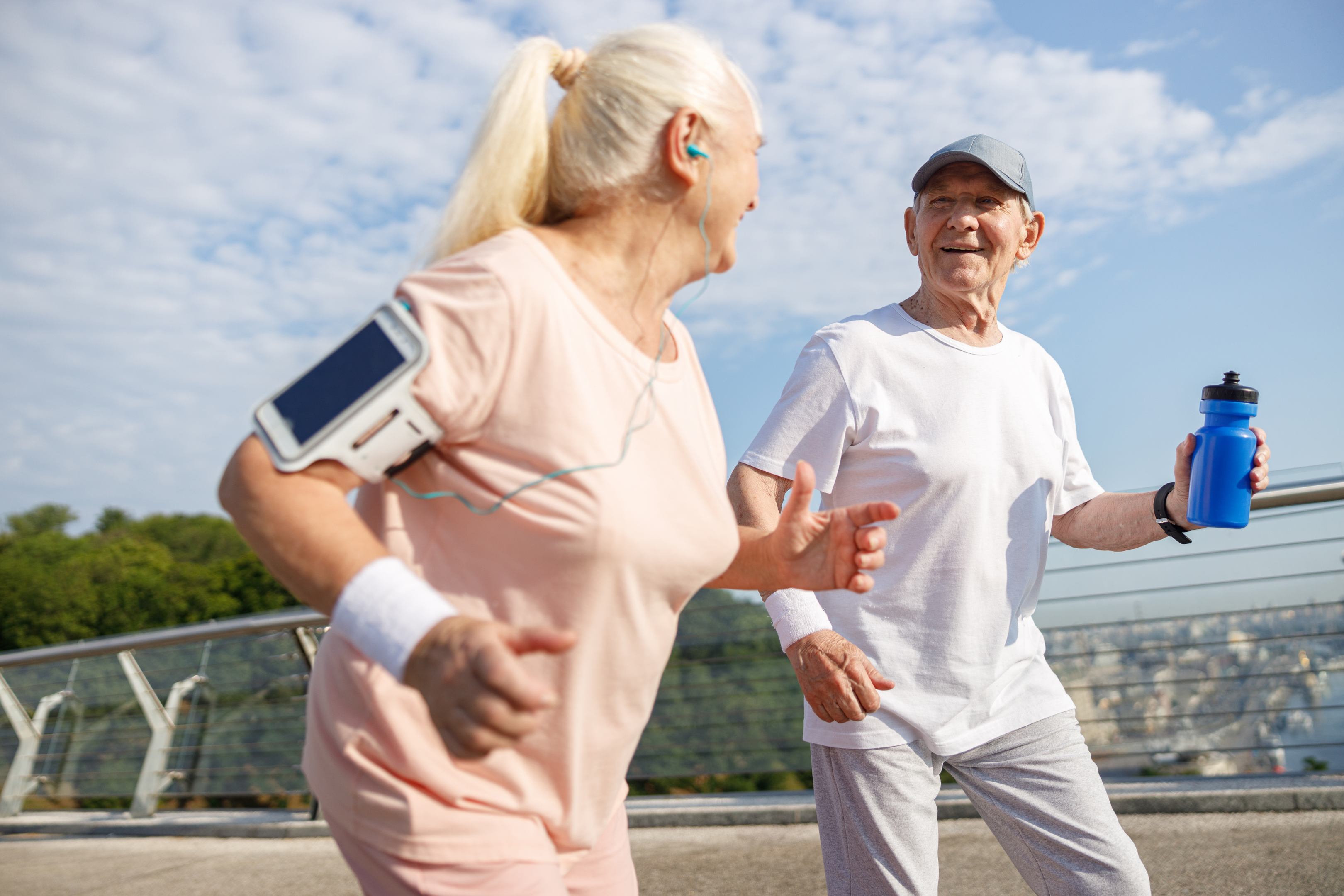
Running
Considered a ‘high-impact’ activity, running involves a lot of stressful compression forces on your knee, hip and ankle joints. This can exacerbate the inflammation, especially if your hip muscles are weak.
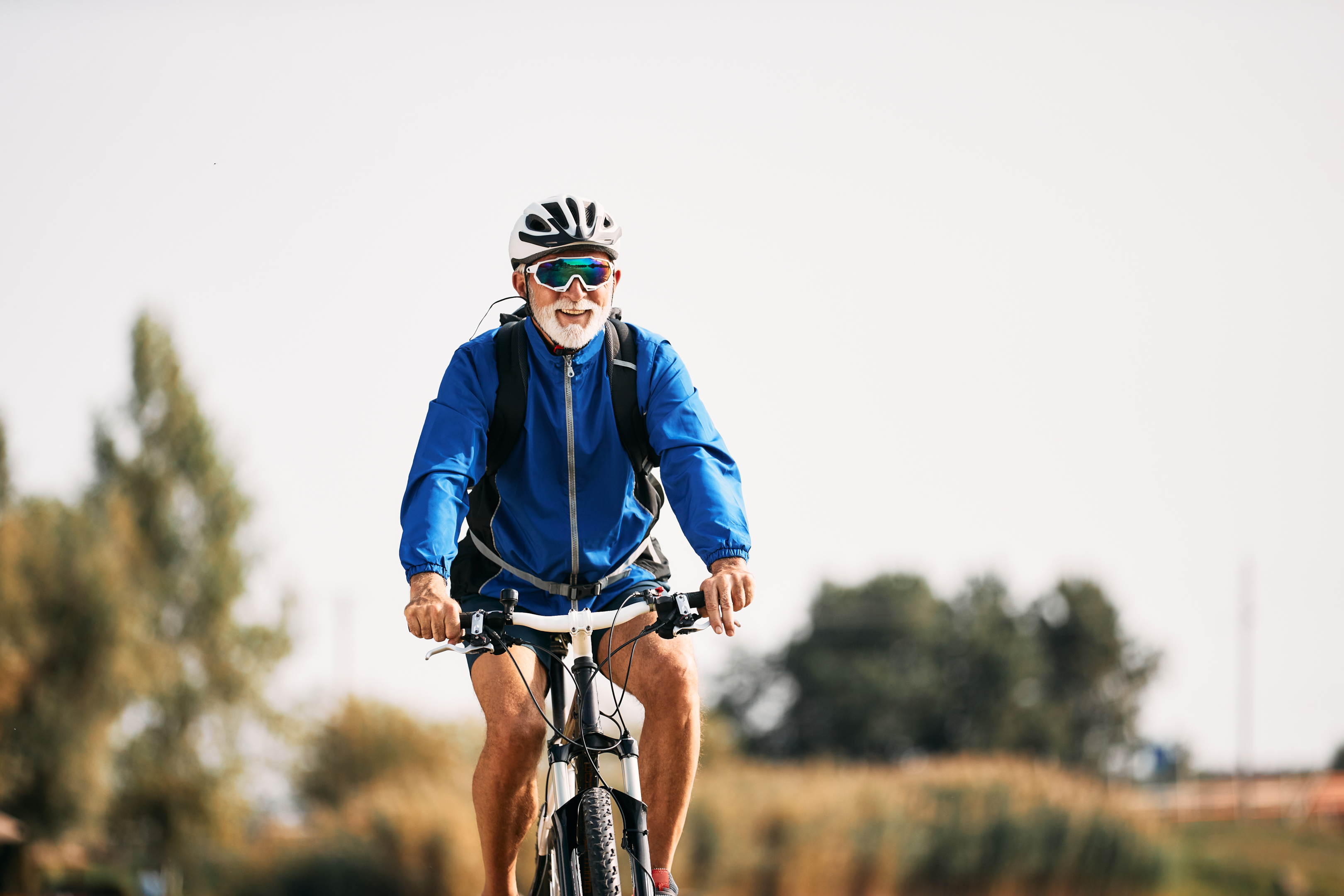
Cycling/Biking
Though lower impact than running, biking is one of the most repetitive exercises with a lot of movement coming from the hip joint and the knees.
Avoid biking until much later in the recovery process, and focus on an exercise program that allows you to exercise slowly to keep hip pain in check.

Cardio Machines Like Elliptical or Stair
Typical machines you may use at the gym to get your heart rate up can cause a lot of pain for someone with bursitis.
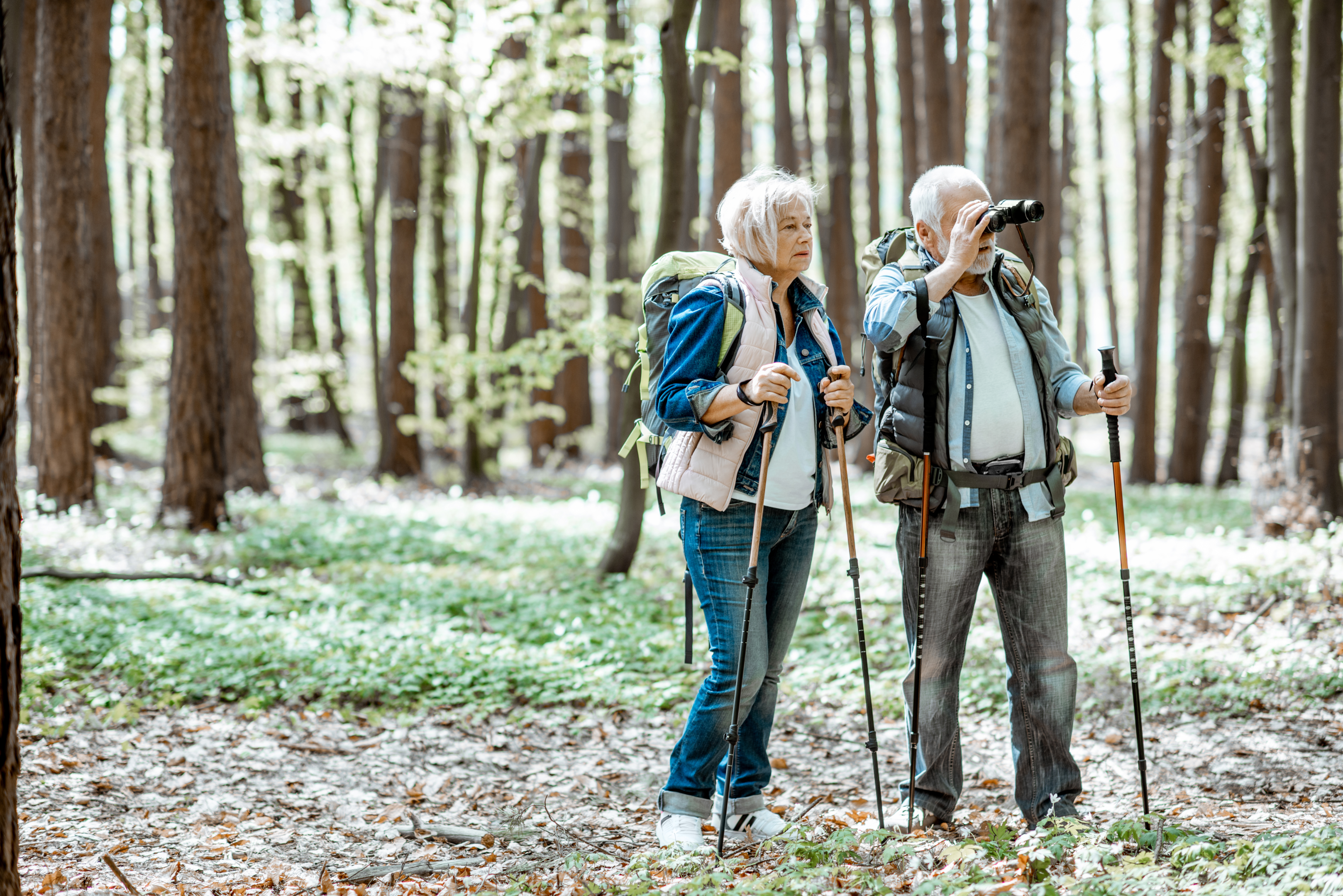
Walking Long Distances
Many wonder if walking is good for hip bursitis. Walking around the house should be fine, but going on a 3-mile walk is likely to worsen symptoms.

Prolonged Sitting, Lying, or Standing
Spending too much time in any position is not good. Both repetitive, prolonged movements and lack of movement can worsen symptoms. It is best to balance moving and resting throughout the day.
How Much Recovery Time is Needed to Treat Hip Bursitis?
Some cases of trochanteric bursitis last a few weeks, while others can persist for longer periods. Some people may develop chronic hip bursitis that can flare up, increasing pain intensity periodically over time. Following exercise guidelines provided by your physical therapist can help manage chronic hip bursitis cases.
Other treatment options are available if pain persists despite physical therapy, medications, and activity modifications.
Orthopedic doctors can administer cortisone steroid injections for hip bursitis pain relief. The doctor will inject cortisone and local anesthetic directly into the bursa in your hip joint, which can result in months of pain relief.1
After getting a hip bursitis injection, it is important to strengthen and stretch the tendons and muscles around the hip joint. These exercises can prevent the pain from returning when the effects of the shot wear off.
In very rare, severe cases, you may consider surgery. However, surgery is usually uncommon unless the bursa is infected with bacteria.4
Key Takeaways
- Hip bursitis is the inflammation of the bursa in your hip joint, causing pain and limited mobility.
- Common symptoms include pain in the outer hip when lying on your side and pain when getting up from a chair after sitting for a long time.
- Hip bursitis pain usually worsens after prolonged activity and can be tender to the touch.
- Excessive stress on the hip joint from repetitive motion, trauma, or certain sports and occupations can cause hip bursitis.
- Recommended initial treatment includes activity limitations and anti-inflammatory medications.
- Effective exercises for managing hip bursitis include side-lying leg lifts, clamshells, and seated kicks.
- Helpful stretches for hip bursitis include the figure four stretch and IT band stretch.
- Avoid exercises like squats, running, cycling, and prolonged sitting or standing, as they can worsen hip bursitis.
- Recovery time for hip bursitis can vary, and chronic cases may require long-term management with physical therapy and possible cortisone injections.
References
- The American Academy of Orthopedic Surgeons https://orthoinfo.aaos.org/en/diseases–conditions/hip-bursitis
- Clifford C, Paul L, Syme G, Millar NL. Isometric versus isotonic exercise for greater trochanteric pain syndrome: a randomized controlled pilot study. BMJ Open Sport Exerc Med. 2019 Sep 21;5(1):e000558. doi: 10.1136/bmjsem-2019-000558. PMID: 31673402; PMCID: PMC6797310. https://www.ncbi.nlm.nih.gov/pmc/articles/PMC6797310/
- Seidman AJ, Taqi M, Varacallo M. Trochanteric Bursitis. [Updated 2022 Nov 20]. In: StatPearls [Internet]. Treasure Island (FL): StatPearls Publishing; 2022 Jan-. Available from: https://www.ncbi.nlm.nih.gov/books/NBK538503/
- InformedHealth.org [Internet]. Cologne, Germany: Institute for Quality and Efficiency in Health Care (IQWiG); 2006-. How can bursitis be treated? 2018 Jul 26. Available from: https://www.ncbi.nlm.nih.gov/books/NBK525763/
- https://orthoinfo.aaos.org/en/diseases–conditions/hip-bursitis



